Keyword
Sedimentologie
66 record(s)
Provided by
Type of resources
Available actions
Topics
Keywords
Contact for the resource
Update frequencies
Service types
-
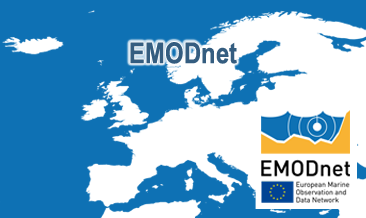
The European Marine Observation and Data Network (EMODnet) consists of more than 100 organisations assembling marine data, products and metadata to make these fragmented data resources more available to public and private users relying on quality-assured, standardised and harmonised marine data which are interoperable and free of restrictions on use. EMODnet is currently in its fourth phase. BGR participates in the EMODnet Geology theme and is coordinating the “seafloor geology” work package from the beginning. In cooperation with the project partners BGR compiles and harmonises GIS data layers on the topics geomorphology, pre-Quaternary and Quaternary geology and provides those, based on INSPIRE principles, via the EMODnet Geology portal https://www. emodnet-geology.eu/map-viewer/. These map layers present the pre-Quaternary and Quaternary sea-floor geology and Geomorphology of the European Seas, semantically harmonized based on the INSPIRE data specifications including the terms for lithology, age, event environment, event process and geomorphology. The data are compiled from the project partners, the national geological survey organizations of the participating countries. The data set represents the most detailed available data compilation of the European Seas using a multiresolution approach. Data completeness depending on the availability of data and actual mapping campaigns. This open and freely accessible product was made available by the EMODnet Geology project (https://www.emodnet-geology.eu/), implemented by EMODnet Geology Phase IV partners, and funded by the European Commission Directorate General for Maritime Affairs and Fisheries. These data were compiled by BGR from the EMODnet IV Geology partners. All ownership rights of the original data remain with the data originators, who are acknowledged within the attribute values of each map feature.
-

The European Marine Observation and Data Network (EMODnet) consists of more than 100 organisations assembling marine data, products and metadata to make these fragmented data resources more available to public and private users relying on quality-assured, standardised and harmonised marine data which are interoperable and free of restrictions on use. EMODnet is currently in its fourth phase. BGR participates in the EMODnet Geology theme and is coordinating the “seafloor geology” work package from the beginning. In cooperation with the project partners BGR compiles and harmonises GIS data layers on the topics geomorphology, pre-Quaternary and Quaternary geology and provides those, based on INSPIRE principles, via the EMODnet Geology portal https://www.emodnet-geology.eu/map-viewer/. These map layers present the pre-Quaternary and the Quaternary sea-floor geology and Geomorphology of the European Seas, semantically harmonized based on the INSPIRE data specifications for Geology, including the terms for lithology, age, event environment, event process. The data are compiled from the project partners, the national geological survey organizations of the participating countries. The data set represents the most detailed available data compilation of the European Seas using a multi-resolution approach. Data completeness depending on the availability of data and actual mapping campaigns. This open and freely accessible product was made available by the EMODnet Geology project (https://www.emodnet-geology.eu/), implemented by EMODnet Geology Phase IV partners, and funded by the European Commission Directorate General for Maritime Affairs and Fisheries. These data were compiled by BGR from the EMODnet IV Geology partners. All ownership rights of the original data remain with the data originators, who are acknowledged within the attribute values of each map feature.
-

Der Downloaddienst (WFS) Karte der oberflächennahen Rohstoffe 1: 50 000 Brandenburg stellt Daten zur Karte der oberflächennahen Rohstoffe 1: 50 000 (KOR50) bereit. Die Karte der oberflächennahen Rohstoffe 1: 50 000 Brandenburg gehören thematisch zu der Rohstoff- und Tiefengeologie. Diesem Thema sind zwei weitere Dienstethemen zugeorndet: - WMS/WFS Strukturgeologische Übersicht BB, - WMS/WFS Reflexionsseismische Horizonte 2D BB. Der WFS beinhaltet die folgenden FeatureTypes: - Karte der oberflächennahen Rohstoffe 1 : 50 000 [app:kor50].
-
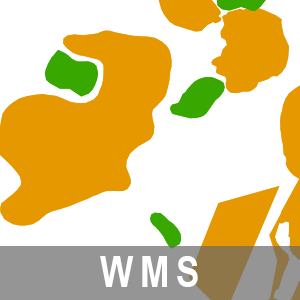
Der Darstellungsdienst (WMS) Karte der oberflächennahen Rohstoffe 1: 50 000 Brandenburg stellt Daten zur Karte der oberflächennahen Rohstoffe 1: 50 000 (KOR50) bereit. Die Karte der oberflächennahen Rohstoffe 1: 50 000 Brandenburg gehören thematisch zu der Rohstoff- und Tiefengeologie. Diesem Thema sind zwei weitere Dienstethemen zugeorndet: - WMS/WFS Strukturgeologische Übersicht BB, - WMS/WFS Reflexionsseismische Horizonte 2D BB. Der WMS beinhaltet die folgenden Layer: - Karte der oberflächennahen Rohstoffe 1 : 50 000 [kor50].
-
Der Band Nr. 10 aus der Publikationsreihe „Fortschritte in der Geologie von Rheinland und Westfalen“ beinhaltet Vorträge mit Diskussionen über ein Internationales Symposium zum Thema „Unterscheidungsmöglichkeiten mariner und nichtmariner Sedimente“, das vom 2. bis 5. Mai 1962 in Düsseldorf stattfand. Eingehend betrachtet wurden dabei die biologischen, geochemischen und mineralogischen Kriterien, welche zur Differenzierung der Sedimente und Sedimentgesteine herangezogen werden können. [1963. 482 S., 93 Abb., 93 Tab., 10 Taf.; ISBN 978-3-86029-810-7]
-
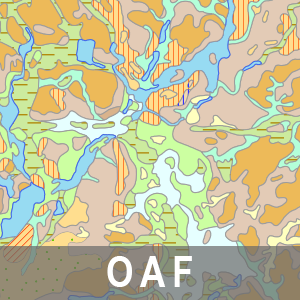
Der Downloaddienst (OAF) Geologische Karten Brandenburg stellt Daten zur Geologischen Karte 1 : 25 000, zu den Geologischen Übersichtskarten 1 : 100 000 und 1 : 300 000, der Karte der Eem-Vorkommen und der Karte zur Tiefenlage der Quartärbasisfläche (Maßstab: 1 : 500 000) bereit. OGC API-Features ist eine Web-API zur vereinfachten Nutzung der Daten in entsprechenden Web-Entwicklungsumgebungen. Die API beinhaltet die folgenden Collections: - Geologische Karte Brandenburg 1:25.000 - Geologische Übersichtskarte des Landes Brandenburg 1 : 100000 - Geologische Übersichtskarte des Landes Brandenburg 1 : 300000 - Karte der Eemvorkommen des Landes Brandenburg 1 : 300000 - Tiefenlage der Quartärbasisfläche des Landes Brandenburg 1 : 500000.
-
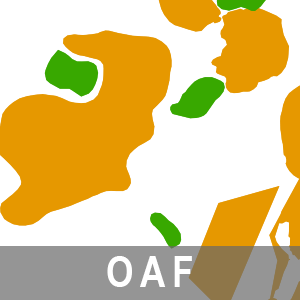
Der Downloaddienst (OAF) Karte der oberflächennahen Rohstoffe 1: 50 000 Brandenburg stellt Daten über oberflächennahe Rohstoffe im Maßstab 1 : 50 000 bereit. OGC API-Features ist eine Web-API zur vereinfachten Nutzung der Daten in entsprechenden Web-Entwicklungsumgebungen. Die API beinhaltet die folgende Collection: - Karte der oberflächennahen Rohstoffe 1 : 50 000.
-
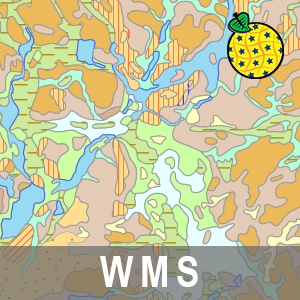
Der Darstellungsdienst (WMS) Geologische Karten BB stellt folgende Daten bereit: Geologische Karte 1:25.000, Geologische Karte von Preußen (einschl. DDR), 1875-1969, Geologische Übersichtskarten 1:100.000 und 1:300.000, Karte der Eem-Vorkommen sowie die Karte zur Tiefenlage der Quartärbasisfläche 1:500.000. Erläuterungen zu den jeweiligen Karten sind hier zu finden: Geologische Karte: https://geo.brandenburg.de/karten/htdocs/2020_GK25_Erl%C3%A4uterungen.pdf, Geologische Übersichtskarte 1:100.000: https://geo.brandenburg.de/karten/htdocs/2020_G%C3%9CK100_Erl%C3%A4uterungen.pdf, Geologische Übersichtskarte 1:300.000: https://geo.brandenburg.de/karten/htdocs/2020_G%C3%9CK300_Erl%C3%A4uterungen.pdf, Karte der Eem-Vorkommen: https://geo.brandenburg.de/karten/htdocs/2020_Eem_Vorkommen_Erl%C3%A4uterungen.pdf, Karte Tiefenlage der Quartärbasisfläche: https://geo.brandenburg.de/karten/htdocs/2020_Quart%C3%A4rbasis_Erl%C3%A4uterungen.pdf. Der WMS beinhaltet die folgenden Layer: - Geologische Karte 1 : 25 000 [gk25], - Geologische Karte von Preußen (einschl. DDR), 1875-1969 [gk25_specialkarte], - Geologische Übersichtskarte 1 : 100 000 [gk100], - Geologische Übersichtskarte 1 : 300 000 [gk300], - Eem-Vorkommen [eem], - Tiefenlage der Quartärbasisfläche [qbas].
-
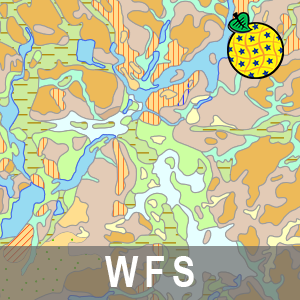
Der Downloaddienst (WFS) Geologische Karten BB stellt folgende Daten bereit: Geologische Karte 1:25.000, Geologische Übersichtskarten 1:100.000 und 1:300.000, Karte der Eem-Vorkommen sowie die Karte zur Tiefenlage der Quartärbasisfläche 1:500.000. Erläuterungen zu den jeweiligen Karten sind hier zu finden: Geologische Karte: https://geo.brandenburg.de/karten/htdocs/2020_GK25_Erl%C3%A4uterungen.pdf, Geologische Übersichtskarte 1:100.000: https://geo.brandenburg.de/karten/htdocs/2020_G%C3%9CK100_Erl%C3%A4uterungen.pdf, Geologische Übersichtskarte 1:300.000: https://geo.brandenburg.de/karten/htdocs/2020_G%C3%9CK300_Erl%C3%A4uterungen.pdf, Karte der Eem-Vorkommen: https://geo.brandenburg.de/karten/htdocs/2020_Eem_Vorkommen_Erl%C3%A4uterungen.pdf, Karte Tiefenlage der Quartärbasisfläche: https://geo.brandenburg.de/karten/htdocs/2020_Quart%C3%A4rbasis_Erl%C3%A4uterungen.pdf. Der WFS beinhaltet die folgenden FeatureTypes: - Geologische Karte 1 : 25 000 [app:gk25], - Geologische Übersichtskarte 1 : 100 000 [app:gk100], - Geologische Übersichtskarte 1 : 300 000 [app:gk300], - Eem-Vorkommen [app:eem], - Rinnen der Tiefenlage Quartärbasisfläche [app:rinnen], - Tiefenlage der Quartärbasisfläche [app:qbas].
-

Results of side-scan sonar mapping within the framework of the German Coastal Engineering Research Council project AufMod (¿Aufbau integrierter Modellsysteme zur Analyse der langfristigen Morphodynamik in der Deutschen Bucht¿ [¿Development of integrated model systems for the analysis of long-term morphodynamics in the German Bight¿], 01.11.2009-31.12.2012): -survey lines of side-scan sonar surveys -grab stations for ground truthing -sediment maps For more information, please visit: https://gdi.bsh.de/en/data/Marine-Geology-Study-Areas-Project-AufMod_Information_Meeresgeologische_Fokusgebiete_-Projekt_AufMod-_DE.pdf
 www.geodatenkatalog.de (S3L)
www.geodatenkatalog.de (S3L)